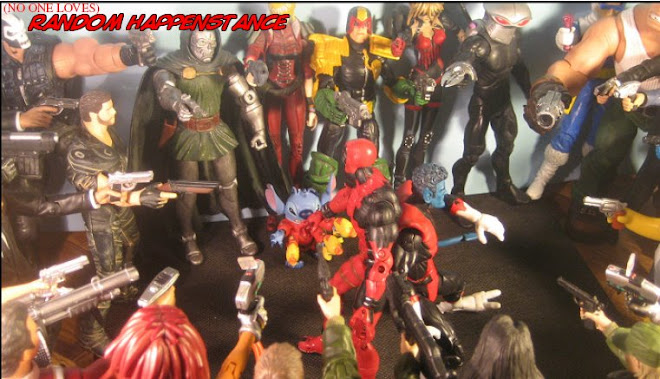
We saw a lot of set-up for this one previously in a match-up with Dr. Faustus, so here's the conclusion: from 1994, Nomad #25, "American Dreamers, Part Four: Some Times Cry" Written by Fabian Nicieza, pencils by Peter Garcia, inks by Fred Fredericks and Greg Adams. (The font on the title makes it tough to figure out, since "Cry" is in a different style!) With another Michael Golden cover! (I got this issue out of the same mark-down bin I got #19, but hadn't realized it was the last issue right away!)
The man called Nomad, Jack Monroe, has often seemed like a gun-crazed reactionary with a short fuse, but his history may make that understandable: as a child, he had accidentally exposed the fact that his hometown was full of "post-World War II Nazi sympathizers." Sent to a foster home, he was found by the man who would become the commie-fightin' Captain America of the 1950's, would eventually go crazy, end up in suspended animation, wake up and work with the original Cap, then go off to be a gun-toting vigilante. Because of his time frozen, Jack was far younger than his childhood friend Bart Ingrid, a senator gunning for the vice-presidential nomination and secret white supremacist. Jack does gun down the white supremacists, though, since he had remote control of the super-soldier smart gun introduced earlier in the series. He doesn't feel bad for them, but he can't even feel for himself.

Jack later says a tearful goodbye to "Bucky," the baby girl he had been taking care of most of the series. His informant Giscard, the "Favor Banker" tells Jack that both the fringe and the centrists are coming together against him, which Jack suspected since the supremacists had both the smart gun and hired mercenary Zaran. The next day, Senator Ingrid speaks before Congress, to answer the allegations against him, but mainly to try and blow up the place with a briefcase bomb. Jack shows up to stop him with a "stripped-down" version of the smart gun; that still looks to be about the same size and as unwieldy as a 50's vacuum cleaner. Jack shoots Ingrid, who drops his dead-man's switch, blowing up most of the Congressional Building, killing eight. (Jack had given enough time for most of the people to get out, but it seems like that would be a bigger deal!)

Presumed dead, Jack is saved by federal agent Hatch, who has him put in suspended animation again. He'd be back, even if that wouldn't go any better for him than this did. It does seem a shame Brubaker killed him off, since the way America is polarized today, you might be able to get something out of Nomad now...













































